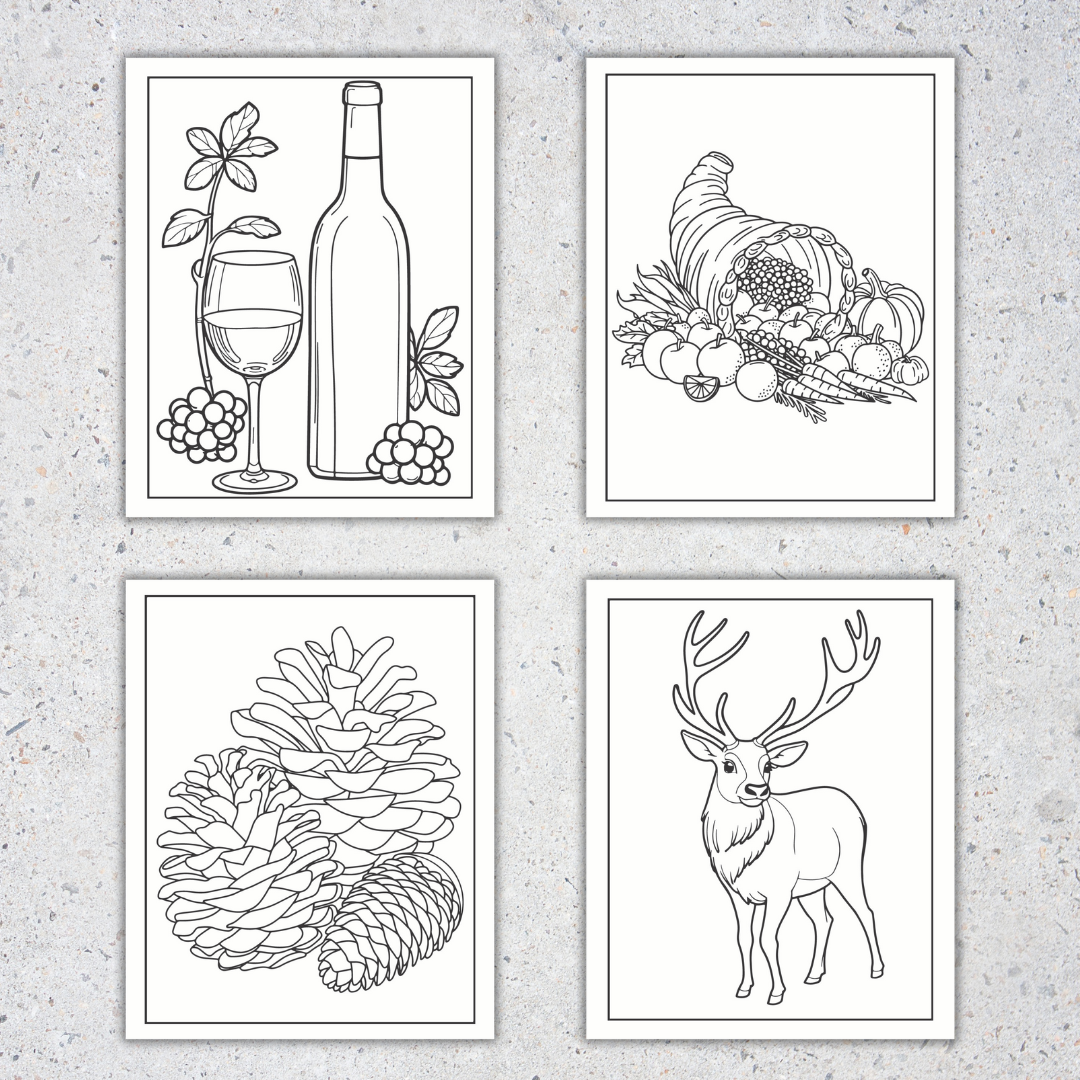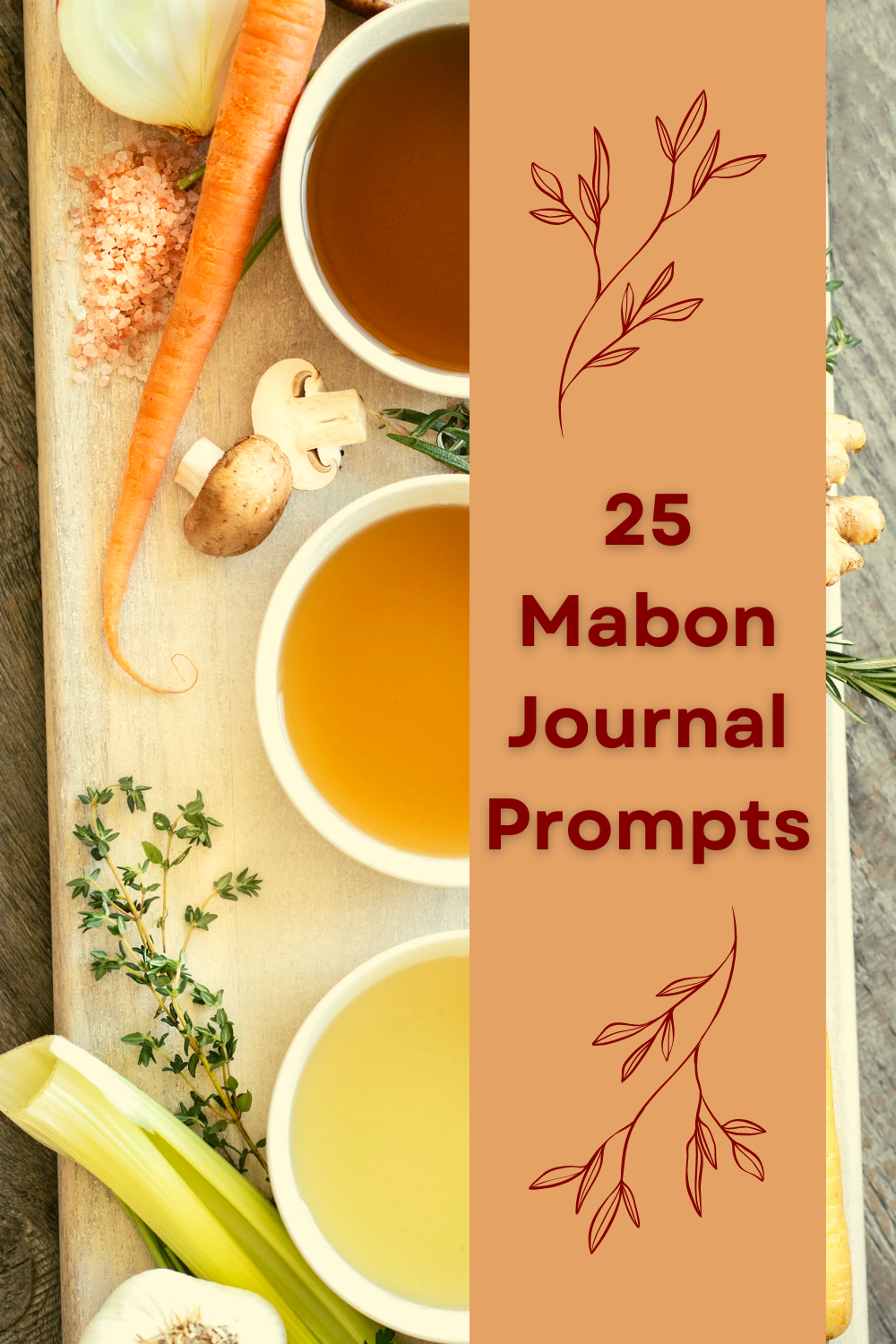Mabon Book: The Mabon Companion
Introducing our new Mabon book, The Mabon Companion!
Mabon marks the Autumn Equinox, a moment of perfect balance between light and dark. As day and night stand equal, we enter a time of reflection, gratitude, and preparation. In the agricultural cycle, Mabon is the second harvest—traditionally associated with gathering fruits, grains, and herbs before the cold months arrive. It’s a time to take stock of what we’ve sown, both literally and metaphorically, and to honor the gifts of the earth as the days begin to wane.
Spiritually, Mabon invites us to slow down and turn inward. This is a season of giving thanks, releasing what no longer serves, and finding harmony in transition. Like the falling leaves, we’re reminded that letting go is part of the cycle. Many celebrate with rituals focused on balance, abundance, and gratitude—setting intentions for the quieter, introspective months ahead. Whether through sharing a seasonal meal, walking among changing trees, or lighting a candle at dusk, Mabon is a gentle threshold between the brightness of summer and the deep stillness of winter.
This companion features modern celebrations, meditations, journal prompts, coloring pages, spells, and information on Mabon rituals and lore to guide you through this harvest season. Its pages are for you to write, color, and make notes on as you perform rituals and celebrate the season.
Inside you'll find:
Mabon and lore about Mabon ap Modron
Mabon associations (crystals, herbs, and symbols)
Opportunities to perform rituals and work magic for Mabon
4 Mabon spells (balance spell jar, gratitude altar, autumn treasures walk, and back up your work spell)
3 meditations (harvest gratitude, reflection and release, and balance)
4 coloring pages
12 journal prompts
Best wishes for your Mabon this year, as we bring in the harvest!
Where to Get Your Copy of The Mabon Companion
Download It
Download your copy of The Mabon Companion from our Etsy store.
Get a Hard Copy
Or get your paperback copy from Amazon or wherever you buy books.
Excerpt from The Mabon Companion: Back Up Your Work Spell
Okay, we admit this is not the most romantic of ideas. But hear us out: Mabon is a time to preserve the harvest. From a traditional standpoint, perhaps that means drying, smoking, canning, pickling, and otherwise preserving foods for the long winter to come. But in our modern world, the work that we do is not limited to agriculture. (Of course, if you have a garden, by all means, can away!)
So for this spell, think about what makes the most sense for the work that you do, and pick a preservation task to make an annual ritual. You could back up your digital files onto an external hard drive or secure cloud service, organize and archive your emails, print and bind copies of your favorite work, update your resume or portfolio, or organize your physical workspace.
One more thing: By “work,” we mean the things that you do, not necessarily your actual job. Think about all the things in your life! Maybe this is the time to go through photos, select a few favorites from the past year, print them, and update your photos albums or update the assortment on your mantel.
You will need:
White candle
Stick of incense
Music you enjoy
Red jasper or tiger’s eye
The supplies you will need to do your preservation work
Use your preferred method for preparing for spellwork. Or: Take a few deep breaths and center yourself. When your energy is calm, continue to concentrate on your breathing, feeling your power rise. Light a white candle. Light a stick of incense of your choice and slowly draw a circle around yourself and your working space.
Turn on music you enjoy and begin preserving your harvest. As needed, touch the crystal to whatever makes sense (a folder, an album, your laptop, the jar you’ve just canned, etc.) and say:
I honor my efforts. I honor my work.
Thank you for journeying with me.
When you are ready, thank the universe for assisting you. Spin slowly in the opposite direction of the incense and blow out the candle.
Introduction to Mabon
Want to explore more about Mabon? Here’s more on the second of three harvest holidays on the Wheel of the Year.
About MAbon
About Mabon: Mabon, the Autumn Equinox, is a sacred pause in the great wheel of the year—a moment when day and night are held in perfect balance. The sun crosses the celestial equator, and for a fleeting time, light and dark are equal. From this point forward, the days grow shorter, the nights cooler and longer. Mabon is the second of the three harvest festivals, following Lammas and preceding Samhain. It is a time to gather what has ripened, to celebrate abundance, and to begin the slow turning inward. Nature begins to shift, leaves burn gold and crimson, and the veil between worlds subtly begins to thin.
Witches and earth-centered practitioners mark Mabon as both a celebration and a reckoning. We give thanks for the fruits of our labor—both physical and spiritual—offering gratitude to the land, the spirits, and the self. It is a time to honor balance, to look honestly at what is flourishing and what must be released. Just as the trees prepare to shed what no longer serves them, so too can we let go of old habits, heavy thoughts, or lingering doubts. Rituals may include sharing a feast with seasonal foods, lighting candles in honor of the shifting sun, or creating altars with apples, acorns, dried herbs, and fallen leaves.
Mabon’s magic lies in the quiet threshold it offers—the last golden breath before the descent into the darker half of the year. It is a potent time for shadow work, for divination, and for walking between the seen and unseen. Many witches use this equinox to seek inner harmony, to recalibrate their energies, and to plant seeds of intention for the coming months. Whether you walk in the woods, brew a spiced cider, or simply sit in stillness with the setting sun, Mabon is an invitation to return to yourself—grateful, grounded, and open to the mystery of what comes next.
Mabon Journal Prompts
Mabon Journal Prompts: Mabon is a powerful time for journaling because it invites reflection, gratitude, and conscious release. As the Autumn Equinox brings equal light and dark, it offers a rare moment of inner balance—perfect for pausing to consider where you’ve been and where you’re going. Journaling during Mabon helps you honor your personal harvest: the goals you've reached, lessons learned, and growth experienced since spring. It’s also an ideal time to write about what you’re ready to let go of as the year begins its descent into shadow. Putting pen to paper during this liminal season helps clarify intentions, process transitions, and reconnect with your deeper self as the wheel turns toward stillness and introspection.
Mabon ap Modron
Mabon ap Modron: Mabon ap Modron is a figure from Welsh mythology whose story echoes themes of darkness, rebirth, and the hidden wisdom of the earth. His name means “Son of the Mother,” and he is often seen as a divine child associated with the changing seasons. Mabon was stolen from his mother Modron when he was just three nights old and imprisoned in a mysterious, liminal place. He could only be found and rescued with the help of ancient, talking animals—symbolizing the need to seek guidance from deep, ancestral forces. Mabon’s return from the underworld-like realm is symbolic of light emerging from shadow, and his story speaks to the cycles of loss and return, descent and rebirth that echo through the turning of the year.
The modern pagan holiday of Mabon, celebrated at the Autumn Equinox, shares this mythic undercurrent of balance, descent, and hidden truths. Though the holiday was named “Mabon” relatively recently (in the 1970s), likely to mirror other Wheel of the Year names drawn from Celtic lore, its themes resonate strongly with the myth. Mabon marks the second harvest and the tipping point from light into darkness. It’s a time to honor the gifts of the earth, to give thanks, and to prepare for the quieter, inward journey of the dark half of the year. In connecting the holiday to the myth of Mabon ap Modron, practitioners are reminded that wisdom often lies in the unseen, and that even in times of loss or stillness, a powerful rebirth awaits beneath the surface.
How to Celebrate Mabon
How to Celebrate Mabon: Celebrating Mabon can be a deeply grounding and soulful experience, rooted in gratitude, balance, and connection to the turning of the seasons. One of the most meaningful ways to honor the Autumn Equinox is by creating a simple ritual of thanksgiving—this might include lighting candles in autumnal colors, preparing a meal with seasonal fruits and vegetables like apples, squash, and grains, and reflecting on what you’ve harvested in your own life this year. Many people create altars decorated with fall leaves, acorns, herbs, and symbols of both light and dark to honor the balance of the day. This is also a beautiful time to walk in nature, observe the changing landscape, and gather natural objects for magical or meditative use.
Mabon is also a powerful moment for inner work and intention-setting. Because the light and dark are in perfect harmony, it's an ideal time to journal, perform divination, or engage in shadow work—gently exploring what you're ready to release as the darker half of the year begins. You might write down habits, thoughts, or patterns you’re ready to let go of and symbolically burn or bury them as part of a letting-go ritual. Sharing food, stories, or blessings with loved ones—whether around a table or at a fire—is another meaningful way to mark the turning of the Wheel. However you celebrate, let it be a moment to pause, breathe, and honor both the bounty and the mystery of the season.
Mabon Associations
Mabon Associations: Mabon is rich with symbolic associations that reflect the themes of balance, harvest, and transition. As the Autumn Equinox, it is linked to the elemental energies of Earth and Air, and is often associated with gratitude, release, and inner harmony. Common symbols include apples, grapes, corn, acorns, and falling leaves—all reminders of the second harvest and the changing season. Colors like deep red, orange, gold, brown, and dark green reflect the turning leaves and the richness of the land. Spiritually, Mabon is connected to deities of the harvest and the waning sun, such as Demeter, Persephone, Modron, and Mabon ap Modron, as well as to the archetype of the Crone who begins to stir. It’s also a time aligned with introspection, shadow work, and preparation for the inward journey of the dark half of the year.
Mabon Meditation
Mabon Meditation: Mabon is a beautiful time for meditation because it invites stillness, balance, and deep reflection. As the light and dark stand in perfect harmony at the Autumn Equinox, we are offered a rare opportunity to pause and center ourselves—both in the world around us and within. Meditation during Mabon can help you tune in to the subtle shifts of the season, release what no longer serves you, and ground your energy before the inward pull of the darker months. Whether you sit in silence, follow a guided journey, or meditate outdoors surrounded by the changing leaves, this is a powerful moment to connect with the turning Wheel, align with your inner equilibrium, and honor the sacred space between growth and rest.
Other Wheel of the Year Books
After you've brought in the second harvest and celebrated Mabon night, are you looking for more modern kitchen witch books on similar festivals on the Wheel of the Year? Whether you're an experienced witch or new to following spells, we have something for you all year round!
The Lammas Companion
The Lammas Companion: Lammas, also known as Lughnasadh, is the first of the three harvest festivals on the Wheel of the Year, celebrating the grain harvest and the waning of summer. It’s a time to give thanks for abundance, honor hard work, and begin the gradual turn inward as the days grow shorter.
The Samhain Companion
The Samhain Companion: Samhain, celebrated on October 31st, marks the end of the harvest and the beginning of the new year in many pagan traditions. It is a liminal time when the veil between the worlds is thin, making it ideal for honoring ancestors, positive magic, and connecting with spirit. Symbolically, it invites us to embrace endings, honor death as part of the cycle, and prepare for the inward journey of winter.
The Yule Companion
The Yule Companion: Yule, the winter solstice, is an ancient festival that celebrates the longest night and the rebirth of the sun. It is a time of hope, rest, and renewal as we honor the return of light and the promise of growth. Traditions include lighting candles, feasting, and spending time with loved ones in warmth and reflection.
The Imbolc Companion
The Imbolc Companion: Imbolc, celebrated around February 1st, honors the first signs of spring and the stirring of life beneath the frozen earth. It is a time of inspiration, purification, protection spells, and setting intentions for the year ahead. Often associated with the goddess Brigid, Imbolc invites creativity, renewal, and the gentle awakening of hope.
The Ostara Companion
The Ostara Companion: Our third instalment is about Ostara, the spring equinox, which celebrates the balance between light and dark and the bursting forth of new life. This sabbat is a joyful celebration that honors fertility, growth, and renewal as flowers bloom and days grow longer. It's a time for planting seeds—both literal and metaphorical—and embracing fresh beginnings.
The Beltane Companion
The Beltane Companion: Beltane, celebrated on May 1st, is a fire festival of fertility, passion, and union. It marks the peak of spring and the coming of summer, a time of creative energy and joyful celebration. Traditions include dancing around the maypole, lighting bonfires, and honoring love, vitality, and the sacred marriage of the divine feminine and masculine. It's one of the most well known Celtic holidays, and a really fun one!
The Litha Companion
The Litha Companion: Litha, or the summer solstice, is the longest day of the year and a celebration of light, abundance, and the power of the sun. It's another of the most well known Celtic holidays. It is a time of joy, manifestation, and honoring the fullness of life. This ancient festival is celebrated with outdoor rituals, feasts, and gratitude for nature’s peak vitality and energy.








